With funds provided by the Ontario Ministry of Agriculture and Food, the Farm Safety Association has developed this safety checklist to help you create a safe and healthy working environment for you and your family. Please feel free to copy or duplicate the list and give it to others in your area.
Each year in Ontario, farm family members die or are injured in tragic accidents. Accidents can result in injury, death, or property damage, and are often caused by unsafe acts or conditions, faulty equipment, or human error.
An INSPECTION of your workplace will help prevent injuries by identifying hazards, recording them, and taking corrective action. You must be committed to correcting the hazards in some manner if you are to succeed in reducing accident potential.
Aspects of a workplace inspection| A - | Major - |
| Life-threatening or serious | |
| injury potential | |
| B - | Serious - |
| Injury or property damage - | |
| correct in the short term | |
| C - | Minor - |
| Long term action can correct | |
| the problem |
Indicate a realistic target date to correct the hazard on the sheets. When a hazard has been corrected, check it off in the last column.
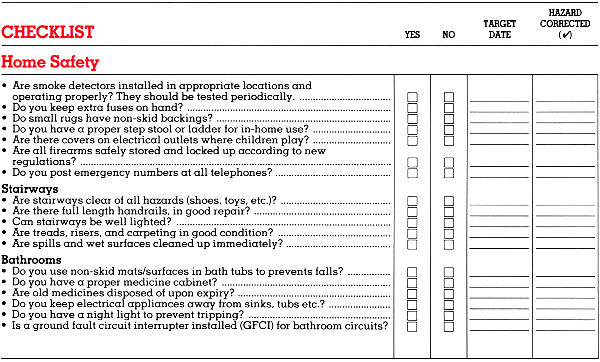
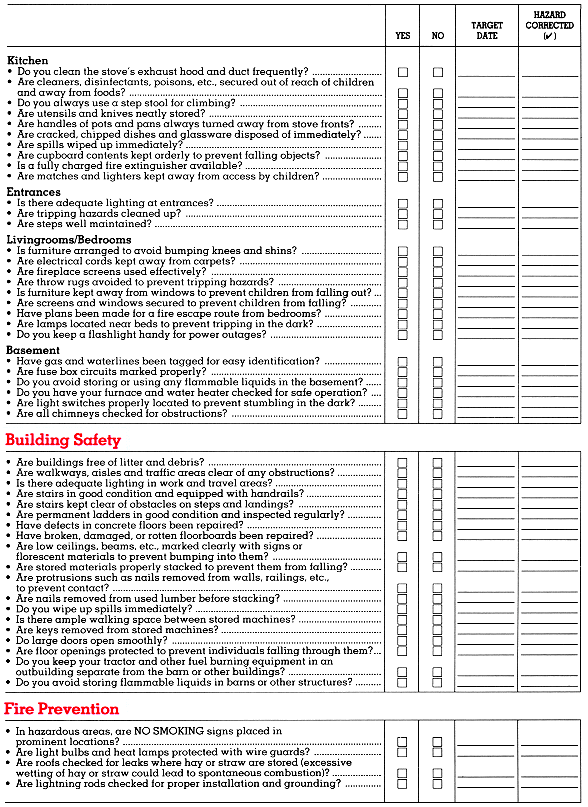

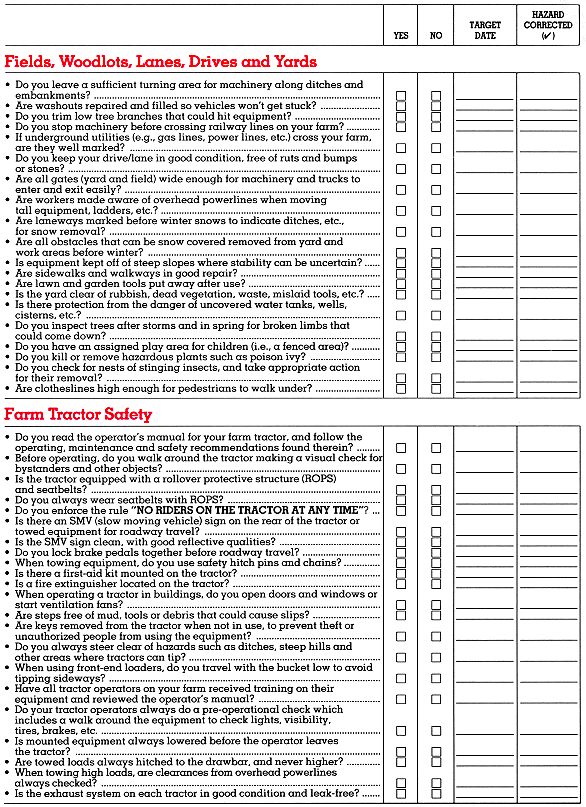
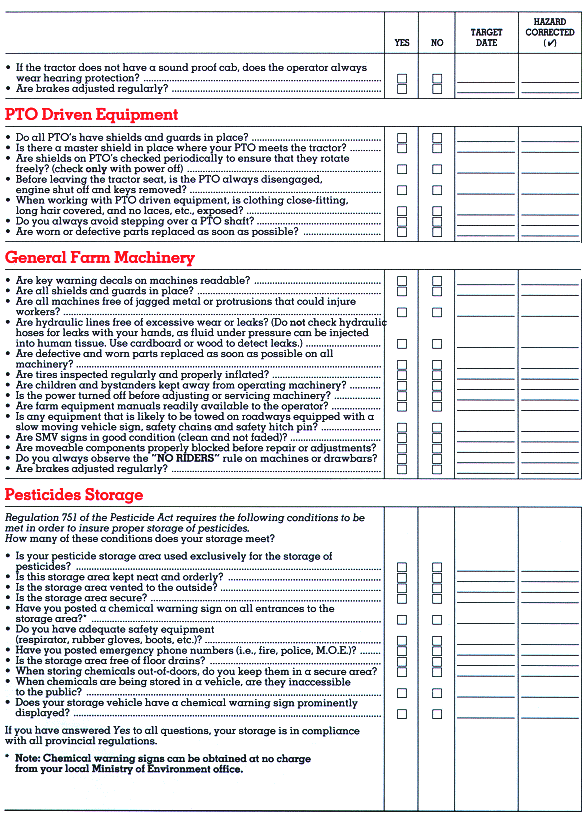
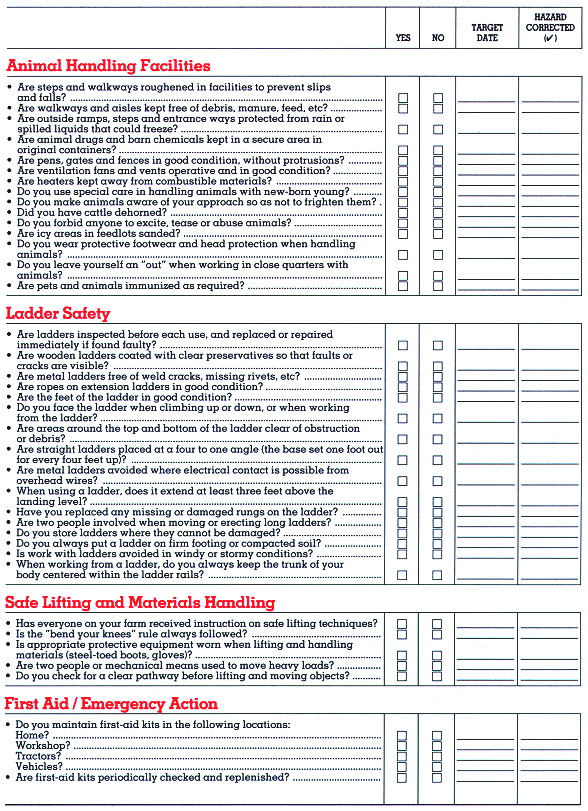
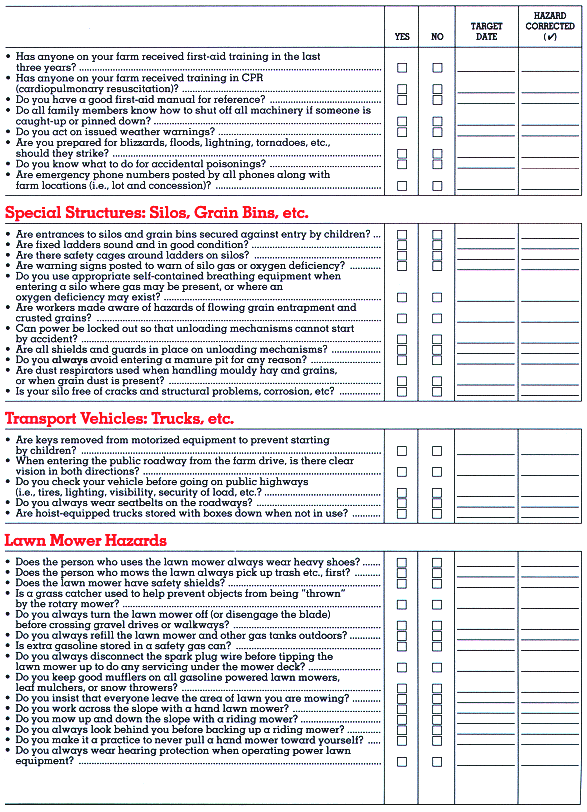

Farm Safety Association Home Page
Disclaimer and Reproduction Information: Information in NASD does not represent NIOSH policy. Information included in NASD appears by permission of the author and/or copyright holder. More